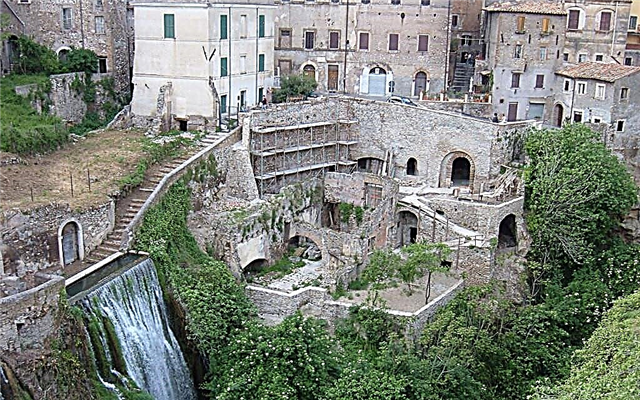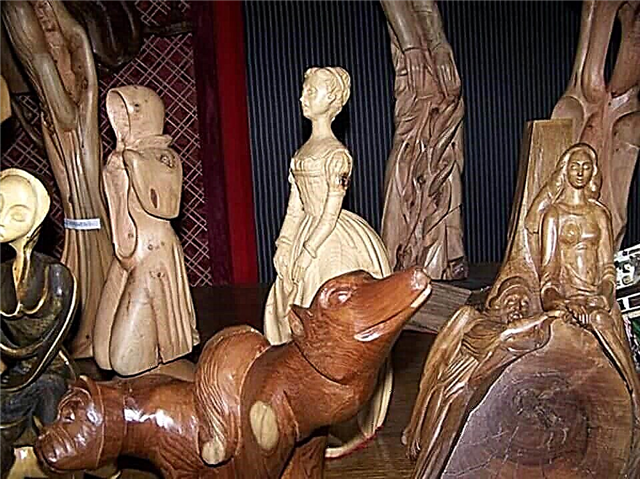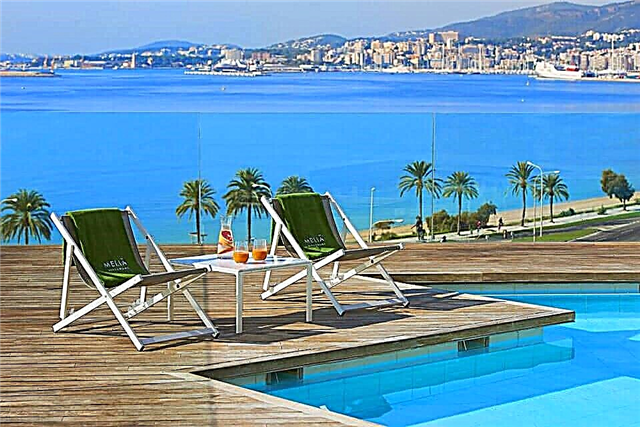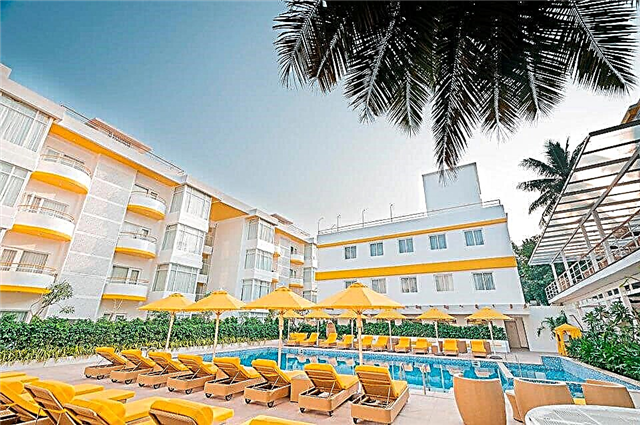Address: Russia, Nizhny Novgorod region, Nizhny Novgorod, Strelka street, 3A
Start of construction: 1868 year
Completion of construction: 1881 year
Architect: Dal L.V., Kilevein R.Ya.
Cathedral height: 87 m.
Shrines:an icon of the Monk Seraphim of Sarov with a particle of relics, an icon of the Blessed Matrona of Moscow with a particle of relics, an icon of the Holy Right-Believing Prince Alexander Nevsky with a particle of relics, an icon of the Holy Great Martyr Princess Elizabeth and Nun Barbara with particles of relics, an icon of St. Nicholas, Archbishop Mir of Lycia, an icon particles of the relics of the holy martyr Cyprian and the martyr Justinha
Coordinates: 56 ° 20'00.9 "N 43 ° 58'17.6" E
Content:
Near the place where the Oka flows into the Volga, in the historical part of Nizhny Novgorod - on the Strelka there is a majestic Orthodox church, which in the diocese has the status of a cathedral. It is perfectly visible both from the city and from the Volga fairway. The slender temple with tent-roofed domes rushes up 87 m, which exceeds the height of a 27-storey building. This Nizhny Novgorod cathedral is one of the three largest Russian churches and is second only to the Moscow Cathedral of Christ the Savior and St. Isaac's Cathedral in the northern capital.

Cathedral of St. Alexander Nevsky from a bird's eye view
History of the New Fair Cathedral
From the very beginning of its work, the famous fair of Nizhny Novgorod had its own Orthodox church - the Spassky Old Fair Cathedral. However, by the 1850s, it could no longer accommodate everyone who wanted to pray here. In 1858, the city was visited by the Russian emperor Alexander III, and the merchants of Nizhny Novgorod asked the bishop for permission to build a new church at the fair, in order to perpetuate the visit of the sovereign and solve the problem with the increased number of believers. The petition was approved, and the townspeople began to collect donations. For ten years, local residents have collected more than 454 thousand rubles for a penny. Huge money at that time!
The foundation stone of the future cathedral was laid in 1868, and Grand Duke Vladimir Alexandrovich took part in this solemn event. Over the next two years, under the leadership of architects Robert Yakovlevich Kilevein and Lev Vladimirovich Dahl, the builders erected the walls of the second fairground church and made a ceiling.
The main expenses for the new cathedral were borne mainly by merchants. The Remizov brothers provided the construction site with high-quality lumber and metal products, the merchant Mikhail Zarubin - with durable limestone. And the brick for the building was supplied by the merchant Dolgopolova, the merchant Rukavishnikov and the owner of the brick enterprise Petelkin.
Finally, in 1880, the temple was completed and transferred to the diocese, although about a year passed before the end of the internal work. This church did not have a permanent parish. And only on the days of trading at the fair - about a month a year, merchants who came to the city came here to pray. Therefore, the large premises of the cathedral were not heated during the cold season, and church services were held in the small church of St. Macarius Zheltovodsky, which was equipped in the vestibule protruding from the western side.

View of the Cathedral of St. Alexander Nevsky from the Kanavinsky Bridge
The icons for the temple were painted by the talented Moscow painter Fyodor Andreevich Sokolov. In addition, some of the icons from the Makaryevsky monastery burned down during the fire were transported here. The solemn consecration of the Orthodox church took place in 1881, and it was attended not only by the leaders of the province and diocese, but also by the Emperor Alexander III himself, Empress Maria Feodorovna and their son, the heir to the Russian throne Nikolai.
After the revolutionary events of 1917, the new authorities were disloyal and even hostile to the Church, and the New Fair Cathedral had to endure decades of persecution, destruction and oblivion. In 1929, the valuable church utensils and icons were removed from it, and a year later the unique carved iconostases and elements of the interior decor made of wood were destroyed and used as firewood for heating the surrounding houses. The residents of Nizhny Novgorod managed to preserve only a few old icons and hid them in the Vysokovsky Holy Trinity Church.
Then the city authorities planned to reconstruct the fairgrounds. They wanted to demolish the Alexander Nevsky Cathedral, and instead install a large Lenin monument. The cathedral tents were dismantled, but, fortunately, the temple itself remained intact. Later, it housed warehouses and apartments for the townspeople. In the 1940s, there was a big fire here, and the fire destroyed the old frescoes on the ceiling and walls. After the fire, the burnt plaster remaining inside the building was completely knocked down.

Facade of the cathedral
During the Great Patriotic War, the cathedral building became part of the city's air defense system. An anti-aircraft battery was on duty on its roof, which, when threatened by enemy aircraft, was supposed to protect the city from bombing.
The New Fair Cathedral was reborn in 1983, when a team of professional architects and restorers and volunteers from among the local residents began to restore it. First of all, they began to rebuild the destroyed tents. The temple was restored based on rare photographs preserved from the late 19th and early 20th centuries. And the Nizhny Novgorod restorers faced a lot of problems. It was necessary to select suitable materials for the roofing, ceilings and tents, establish heating and install a new iconostasis.
It is curious that modern engineers could not understand how the builders at the end of the 19th century managed to install and fix a huge iconostasis in the cathedral, the height of which reached 26 m. The restorers had to develop a completely different design of the iconostasis and new engineering solutions. Church services have resumed here since 1992, when the restoration was still pending.
Today the cathedral has been completely restored and next to it it is planned to build a belfry, the bells for which were cast in advance. The largest "Cathedral" bell, 4 m high, can be seen next to the temple, near the southern entrance. It was made in 2011 and weighs 60 tons. In Russia it is the third largest bell. Two larger ones are located in the capital and the Trinity-Sergievskaya Lavra.

Domes of the Cathedral of St. Alexander Nevsky
The architecture of the temple and its interior decoration
The new fair five-hipped cathedral is cruciform in plan. When making its foundation, traditional piles were not used. In terms of its architecture, the cathedral corresponds to the samples of religious buildings designed by the famous Russian architect Konstantin Andreyevich Ton. It especially resembles the Church of the Annunciation in St. Petersburg. Five octahedral tents are combined into one solid architectural structure, and the central one is much larger. The facades of the temple combine different architectural traditions, with a predominance of eclecticism. As the old interiors were completely lost, the interior decoration and wall paintings were carried out during the last restoration.
The current state of the cathedral and the visiting regime
The Orthodox Church is active. For believers and tourists, it is open from 8.00 to 18.30. Guided tours of the cathedral are conducted from 12.00 to 17.00. Church services are held here daily at 9.00 and 17.00.
Since 1994, a Sunday school has been open for the children of parishioners, one of the first in the city. A detachment "Knights", a puppet theater, a children's and youth choir and hobby groups were created under her.

View of the southeast facade of the cathedral
Since 1991, an Orthodox library has opened its doors in the cathedral. It works on weekdays from 12.00 to 17.30, and on Saturdays and Sundays from 12.00 to 16.00. The days off are the twelve-year holidays.A very large number of books are collected in the funds of this library: texts of Scripture and its interpretation, literature on theology and general church history, liturgy, sermons, books on sectarian studies, church law, as well as on pedagogy, psychology, philosophy, linguistics and natural sciences. The Cathedral Library is considered the largest in the diocese and is designed for the widest circle of readers interested in matters of faith and Christianity.
Since 1991, catechetical courses have been operating at the cathedral, which provide elementary theological education. Since 1994, an icon-painting workshop has been created here, whose artists make icons to order. They make them according to ancient technologies and traditional icon painting canons that existed until the 16th century. Since 2008, a school of bell art has also been opened at the cathedral, where everyone can receive training for a church bell ringer in 8 weeks.
There are three altarpieces in the church dedicated to Christian saints - Alexander Nevsky, Mary Magdalene and St. Nicholas. On the west side of the main building there is a vestibule, where there is a church dedicated to the saint revered by the people of Nizhny Novgorod - Macarius Zheltovodsky and Unzhensky.

Main entrance to the cathedral
How to get there
The temple stands in the Kanavinsky district of the city, not far from the river port, on the street. Arrow, 3A. To get to it, you need to take buses or fixed-route taxis to the stop “Strelka” or “TC Castorama”, and then walk about 0.7 km to the temple. The Cathedral is 2.3 km away from Moskovsky Train Station. This distance can be walked or taken by taxi.











